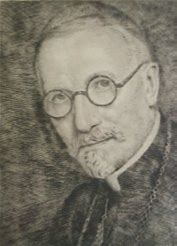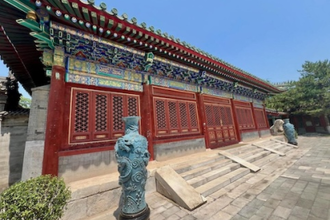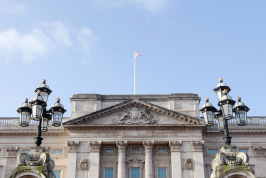Wuhan: Recording the first Synod of Bishops in China

Archbishop Costantini
A reflection by a Catholic in Wuhan, who prefers not to be named.
Departing Wuhan for Shanghai three weeks ago, I suddenly realised that I was on a train for the first time in over nine months. Three months of blanket restrictions on movement at the beginning of the year were followed by a personal decision to avoid travelling beyond the province for another few months. This approach has been common for most people as China continues its cautious but remarkable recovery from the Covid-19 pandemic. The four-hour journey to Shanghai, parallel to the massive Yangtze River, reflects another huge change in China, namely the ease of travel introduced by the growing high speed rail network. The journey time was reduced to less than half of what it was as recently as ten years ago.
International news reports explaining China's economic leap during the past 30 years often feature the bright lights of the Shanghai skyline. The modern architecture, efficient urban transport and 20 million residents combine to form a setting that stands in sharp contrast to the vast rural regions that are becoming silent witnesses to declining communities.
During my visit to Shanghai a friend kindly brought me to the offices of Guangqi printing press, one of the two main Catholic publishers in China. The opportunity to meet Fr Anthony led to an informative tour of the centre where translation projects are part of their ongoing research and publication. A colourful array of monthly magazines indicated that the universal Church is an important part of what is promoted.
Fr Anthony also brought us to his office, the 20th floor location providing a unique view of this central part of the city, the old and the new neatly weaved together below us. Surrounded by several high buildings near one of the city's major crossroads is St Ignatius Cathedral, a beautiful place of worship that has stood here since 1910, a cathedral that has been visited by several international dignitaries in recent years.
Our view from such a vantage point led to a discussion about the old and the new standing side by side in the centre of one of China's major cities. Reference was also made to the year 1924 when the cathedral hosted an opening Mass for the first Synod of Bishops in China under the guidance of Archbishop Celso Costantini, the first Apostolic Delegate to China. The importance of Archbishop Costantini's place in the Church in China was coincidently visible on one of the recently published monthly magazines on the nearby table, his portrait featuring on the front cover.
I mentioned that in preparation for the 1924 Synod of Bishops, which included the leaders of several missionary institutions in China, Archbishop Costantini had lived in Wuhan for two years. Later I asked Fr Anthony if he had ever seen the black and white video footage of the bishops as they exited the cathedral with Archbishop Costantini. His surprised response showed his immediate interest in this item of historical record. I explained that Fr Richard Ranaghan was a Columban priest from Ireland who had lived in the US for two years before coming to China in 1920. In the weeks before leaving the US he had received permission, as well as the financial support, to buy two cameras and a movie camera, the latter being a groundbreaking technical innovation of the time. His eventual production of a well-narrated documentary film, Cross and Dragon, shows missionary life in a variety of settings in China during the early 1920s, the concluding scene being 90 seconds of footage showing the Synod members in Shanghai. Their purposeful walking past both sides of Fr Ranaghan's movie camera seems to symbolise the reason for the Synod, an effort to lay out a secure path for the future of the Catholic Church in China.
Film reels in the 1920s were unable to record sound but the editing that took place in the 1930s benefitted from an advance in technology that made sound recording on film a new possibility. Fr Ranaghan even went as far as convincing an emerging young Catholic singer in the US to volunteer his time by singing three hymns for the missionary film, a singer who later became a household name in many countries - Bing Crosby.
Archbishop Costantini's dedicated and creative role in the life of the Catholic Church in China continues to receive the affirmation of Catholics in this vast nation. He is fondly remembered for encouraging the Vatican to appoint local leaders for the Church in China.
In 1926 he accompanied six Chinese priests to Rome where they became the first group of modern-day Chinese bishops. Presumably, Archbishop Costantini would approve of the current situation in China where there are 100 Chinese bishops, all of whom are in communion with Rome. He also encouraged the presentation of the Christian message through the medium of Chinese art, while also understanding that this process would take several generations to reach fruition. In more recent years, various publications show that his hope for this area of Church life in China is increasingly finding expression in the work of Chinese artists through traditional ink painting, sculpture and stained glass.
When I departed Shanghai a few days later on the return journey to Wuhan, I felt happy about the unexpected meeting with Fr Anthony. Later that week I sent him a DVD copy of Fr Ranaghan's film. He responded to say that the Shanghai part of the film showing St Ignatius Cathedral and the bishops in 1924 was indeed a precious item of history. Little would Fr Ranaghan have realised that his pioneering efforts at recording the life of the Church in China a hundred years ago could still attract the interest of people in modern-day Shanghai.
From the middle of the last century there was a serious disruption to the way historical documents were naturally accumulating in the archives of the Church in China. Thankfully, in recent years, new ways are emerging for the gaps to be filled with the assitance of people in other countries. Fr Anthony indicated that the footage of Archbishop Costantini and the bishops at St Ignatius Cathedral in 1924 was the recovery of another piece of the jigsaw of Church history for the Diocese of Shanghai. The newly opened Tushanwan Museum, located near St Ignatius Cathedral, is dedicated to telling the story of the Church in that part of China. Located in the heart of the city, the museum is another way in which Chinese people can learn about the Church in modern China, a Church that continues to grow out of the dedication, creativity, foresight and faith of its people in previous generations, among them an Italian archbishop who saw the importance of preparing the way for its own people to become its faithful leaders.


















